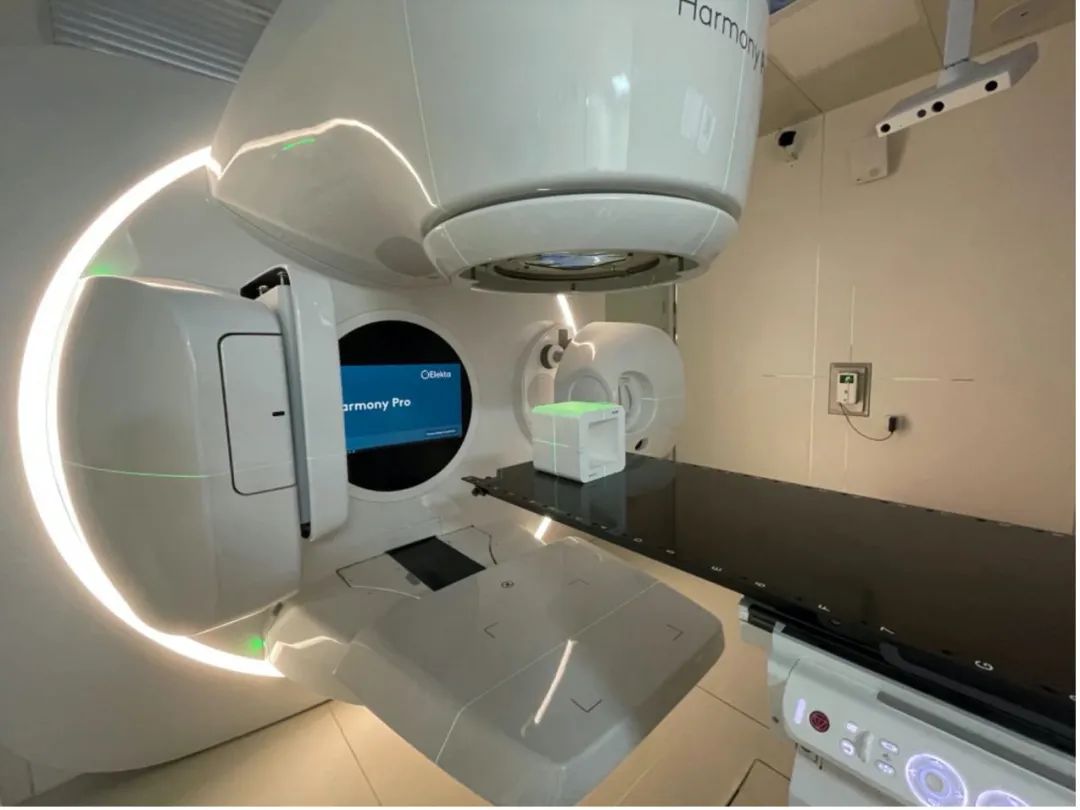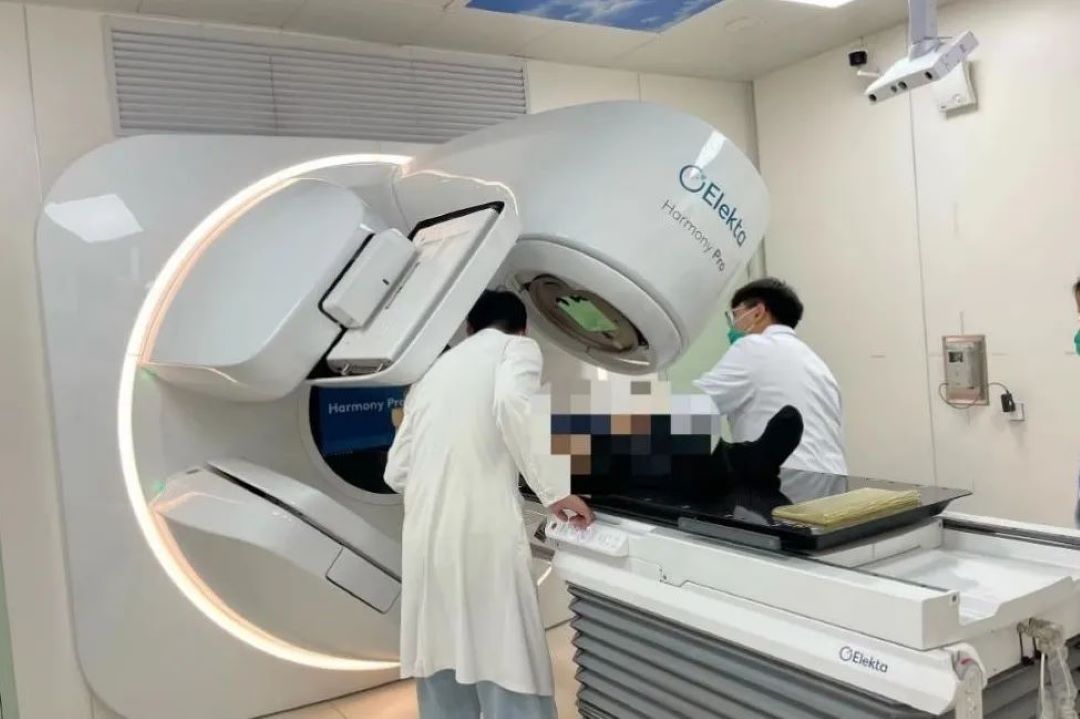Radiation Oncology | Peking University People's Hospital Launches China's First Comprehensive Adaptive Radiotherapy Solution for Lung Cancer Treatment
影像“靶向”追踪肿瘤,“在线四维影像引导”让放疗更精准
2024-10-31
Peking University People's Hospital (PKUPH) recently performed China's first real-time, four-dimensional, image-guided adaptive radiotherapy (ART) on a lung cancer patient, demonstrating promising treatment results. In May of this year, PKUPH took the lead in installing the Harmony Pro radiotherapy system, an intelligent ART machine, in China. This technology marks a new milestone in precision oncology, enhancing treatment efficacy and offering greater hope to cancer patients.

Precision is the core of radiotherapy. In traditional radiotherapy, once the target area is contoured and the dose is determined, the radiotherapy plan is typically used throughout the entire treatment. However, slight changes in the positions and shapes of tumors and surrounding organs may occur due to factors such as breathing, heartbeat, gastrointestinal peristalsis and bladder filling. In addition to the fact that tumors may shrink during treatment, it can be helpful to have real-time detection and adjustment of target areas to keep the treatment as accurate and individualized as possible for each patient.
The Harmony Pro system, the first of its kind in China, integrates advanced image guidance and ART capabilities to enable real-time adjustments during treatment. With the assistance of AI, it can rapidly detect any changes in tumor and organ positioning, and automatically redefine target areas and contours, thus providing a new treatment plan with higher precision.

Radiotherapy, one of the three primary methods of treating cancer, uses beams of intense energy to kill cancer cells. Around 70% of cancer patients need radiotherapy during treatment. Traditional radiotherapy may expose a broader margin to radiation due to organ motion, which may increase the risk of affecting healthy tissue. Additionally, the size of the tumor may also shrink during radiotherapy, causing more surrounding tissues to be inadvertently included in the irradiation field. The traditional approach is to pause treatment and replan the radiotherapy so as to match the reduced tumor volume. Recent medical advances have led to a new era of precise radiotherapy, enabling treatment for any region, particularly tumors in complex areas like the brain, spine, lungs, and nasopharynx.
Among the first to benefit from this new technology was Mr. Zhang, recently diagnosed with lung cancer during a routine check-up. He consulted with Professor Zhang Min, Vice Chair of the Department of Radiation Oncology at PKUPH, regarding his treatment plan and expressed his concerns about potential side effects caused by radiotherapy. Professor Zhang Min, after a thorough multidisciplinary consultation, recommended the use of ART due to the tumor’s proximity to critical organs and Mr. Zhang's reduced lung function. “This approach will minimize radiation exposure to surrounding organs and avoid potential delays in treatment,” Professor Zhang Min explained.

The Harmony Pro system is a streamlined ART solution that ensures safety, precision, and efficiency. From patient preparation to imaging guidance, contouring, quality control, assessment and treatment delivery, it supports each stage of radiotherapy, offering personalized, precise and safer care for cancer patients.
On September 5, PKUPH completed China’s first two cases assisted by the Harmony Pro system for patients with locally advanced lung cancer. Each session lasted less than 30 minutes, yielding superior treatment quality without disrupting the therapy.

